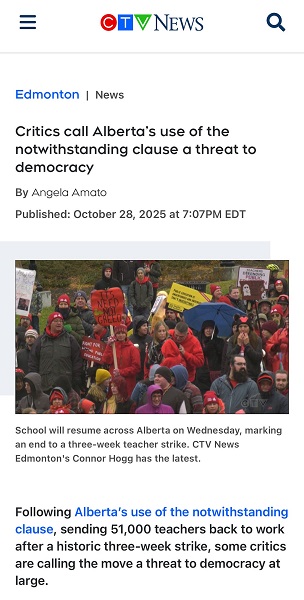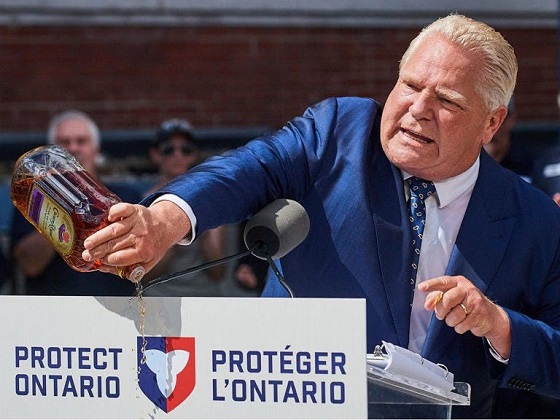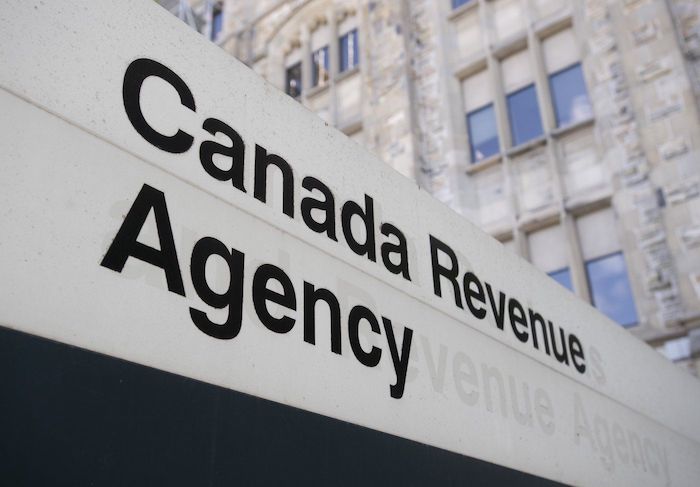Alberta
Alberta bans fires in provincial parks, protected areas, hiring 200 new firefighters, increasing fines & more

The Albert government is taking a number of steps to reduce the risk of spring wildfires while protecting municipalities.
Alberta Wildfire is hiring 200 additional firefighters, invoking a fire ban, implementing off-highway vehicle (OHV) restrictions, increasing fine violations and funding $20 million more in community FireSmart initiatives, all to prepare for the upcoming wildfire season during COVID-19.
Alberta Parks is also instituting a fire ban in all provincial parks and protected areas.
These early preparedness measures will ensure the province can effectively focus resources where they are needed most in the event of multiple emergencies happening at the same time.
Typically, the wildfire hazard is highest in Alberta in late April through May, when fuel like trees and grasses have extremely low moisture content after the snow has melted.

A massive wildfire swept through parts of Fort McMurray in May 2016, leading to the evacuation of the population and billions in damages. Photo Courtesy/Government of Alberta
More than a million acres burned last year and 71 per cent of wildfires were human-caused and entirely preventable. With provincial resources currently stretched due to COVID-19, these preventative measures will better equip Alberta’s response to spring wildfires this year.
“Albertans are tough and we’re all doing what we can to keep each other safe during COVID-19. With Alberta’s wildfire season matching with the expected peak of COVID-19, we have to take extra precautions to ensure our response efforts are well-funded and planned out. This spring, we may find ourselves facing multiple disasters at once. With all these measures, we will be prepared.” Devin Dreeshen, Minister of Agriculture and Forestry
Increased firefighting resources
An additional $5 million investment is being made to hire and train 200 high-quality firefighters to assist with the provincial wildfire suppression this season.

The fire ban and OHV restriction are temporary measures, which will remain in place only as long as required to combat the wildfire risk.
More than 800 seasonal firefighters will join 370 year-round staff at Alberta Wildfire. These resources are hired at one of the 10 Forest Areas, and are moved throughout the Forest Protection Area as required.
Fire ban and OHV restriction
A fire ban in the Forest Protection Area, provincial parks and protected areas, as well as a recreational OHV ban on Crown land in the Forest Protection Area, will come into effect April 15.
Alberta’s Forest Protection Area covers almost 60 per cent of Alberta, most of the northern half of the province and the western border, excluding federal parks.
The government recognizes that many Albertans use OHVs and respects this valid activity. At the same time, the government must take into account limitations and manage risk due to the COVID-19 pandemic. Hot mufflers can potentially start wildfires.
The fire ban and OHV restriction are temporary measures, which will remain in place only as long as required to combat the wildfire risk. Measures may later be adjusted to take into account the needs of specific regions.
All fire permits will be suspended in this area, and landowners are responsible for ensuring any holdover fires are extinguished by this time.
Indigenous people may use OHVs on public land for traditional purposes. Use of OHVs on private lands, for industrial use (for example forestry, agriculture and energy) and by emergency responders is also permitted.

A recreational off-highway vehicle (OHV) ban on Crown land in the Forest Protection These OHV restrictions are only temporary measures.
Fines are being doubled from $300 to $600 for non-compliance with a fire ban and from $600 to $1,200 for non-compliance with an OHV restriction. With 71 per cent of last year’s wildfires started by people, these fine increases reflect the seriousness of the preventative measure Albertans must take to prevent wildfires.
Individuals found contravening a fire ban or OHV restriction will be subject to increased fines, starting April 15, and could be held liable for all costs associated with fighting a wildfire. Last year, more than $600 million was spent fighting wildfires in Alberta.
These fines are in addition to the existing penalties for arson under the Criminal Code.
“Our province is taking steps to prepare for wildfires and other hazards this spring and summer by increasing our emergency response capacity. This means that while we continue to respond to the COVID-19 pandemic, we will also be ready to respond to other emergencies as they may arise.” Kaycee Madu, Minister of Municipal Affairs
Increased FireSmart funding
FireSmart will receive a funding boost of up to $20 million to support vegetation management in the province. The department will work with municipalities to ensure these funds are used this fiscal year.
FireSmart helps to reduce the wildfire risk to Albertans, their homes and communities. The FireSmart program includes grants to support the most at-risk communities in Alberta, including Indigenous communities.
This additional funding will help mitigate wildfire damages and losses in more Alberta communities by creating FireSmart zones around at-risk communities to reduce wildfire hazards.
To increase response capacity and prepare for multiple and concurrent disasters, such as wildfires and floods, the Provincial Operations Centre has been reinforced by the creation of a Pandemic Response Planning Team. This team will help coordinate government’s medium and long-term response to the COVID-19 pandemic.
Quick facts
- For more information on wildfires, download the Alberta Wildfire app.
- Up-to-date information on fire restrictions, fire bans, OHV restrictions and general wildfire information is available at albertafirebans.ca or by calling 1-866-FYI-FIRE (1-866-394-3473).
- To report a wildfire, call 310-FIRE (310-3473) toll-free, from anywhere in Alberta.
- Most new seasonal staff will be on-the-ground firefighters, with wages between $22 and $28 per hour.
- Fire bans and OHV restrictions have proven to be effective prevention tools in reducing the number of human-caused wildfires.
- Anyone found to be non-compliant with a fire ban or OHV restriction may also have to go to court and may receive a fine up to $100,000. Anyone found to be the cause of a wildfire may be liable for the costs associated with extinguishing the fire.
- FireSmart is a program that requires cooperation of all people living, working and playing in the forest.
Alberta
Province orders School Boards to gather data on class sizes and complexity by Nov 24

Better data, better outcomes for Alberta students |
To help schools address classroom complexity, Alberta’s government will begin collecting annual data on class size and composition.
Over the past three years, Alberta has welcomed more than 80,000 new students. With this unprecedented growth, classroom complexity and class sizes are among the biggest issues facing schools and teachers across the province.
To meet this challenge head on, Alberta’s government will work with school boards to gather yearly data on class sizes and composition. This information will be used to better understand staffing, student needs and classroom complexity. School boards will be required to submit data on Alberta classrooms by Nov. 24, and by January, this data will be made publicly available and will then be released annually.
Data collected on classroom complexity will help the province understand and address issues in schools, including class sizes, and support strategic investments in classrooms. Over the next three years, school boards will be provided with funding to hire 3,000 teachers and 1,500 new education assistants to support students with complex needs.
“We are ready to work with school boards and teachers to address classroom complexity and class sizes. We have heard them loud and clear and we are taking bold action to address these issues.”
Alberta’s government is establishing a Class Size and Complexity Task Force to begin work immediately on identifying solutions to the challenges facing Alberta classrooms. Alongside new annual data collection, the task force will ensure every student gets the attention and support they need to succeed. Details about the task force will be shared in the coming weeks.
“This data will provide essential insight into classroom realities, guiding evidence-based decisions and advocating for sustainable funding to address complexity, ensuring every student and educator in Alberta has the support to thrive.”
Quick facts
To inform decisions on addressing classroom complexity, data will be collected on total numbers of:
- all staff, per school, including roles
- substitute teachers
- district staff, listed by job title
- students, per classroom, per school
- severe, mild/moderate, and gifted/talented students, per classroom, per school
- English as an additional language (EAL) students, per classroom, per school
- refugee students, per classroom, per school
- First Nations, Métis and Inuit students, per classroom, per school
- Individualized Program Plans, per classroom, per school
- students waitlisted for assessment, per classroom, per school
- incidents of aggression and violence
- $55 million was provided in Budget 2025 to address classroom complexity.
- 8.6 billion is being invested to build and renovate more than 130 schools across the province.
- Budget 2025 is investing $1.6 billion in learning support funding to help meet students’ specialized learning needs.
- Budget 2025 is investing $1.1 billion to hire more than 4,000 teachers and educational staff.
Alberta
How one major media torqued its coverage – in the take no prisoners words of a former Alberta premier

(Editor’s note: I was going to write on the media’s handling of the Alberta government’s decision to order striking teachers back to work and invoke Section 33 of the Charter in doing so. But former Alberta premier Jason Kenney provided such a fulsome dissection of an absence of balance and its consequences in terms of public trust on X that I asked him if The Rewrite could publish it. He said yes and here it is – Peter Menzies.)
By Jason Kenney
This ”story” is an object lesson for why trust in legacy media has plummeted, and alt right media audiences have grown.
”story” is an object lesson for why trust in legacy media has plummeted, and alt right media audiences have grown.
Here CTV “digital news producer” @AngeMAmato (she/her) writes a story about “experts” calling the use of Sec. 33 “a threat to democracy.”
Who are the experts?
A left wing academic, and a left wing activist. The latter, Howard Sapers, is a former Liberal MLA (which the article does not mention) for a party that is so marginal, it has not elected an MLA in over a decade.
For good measure CTV goes on to quote two left wing union bosses, who of course are predictably outraged.
A more accurate headline would be “Four people on the left angry about use of Notwithstanding Clause.” Which is the opposite of news. It’s the ultimate “Dog Bites Man” non-story.
Did the CTV producer make any effort to post a balanced story by asking for comment from academics / lawyers / think tanks who support use of Sec. 33? Did she call the @CDNConstFound or the @MLInstitute’s Judicial Power Project? Did she attempt to reach any of these four scholars, who just published their views in a @nationalpost op-ed last week?
Did she have an editor who asked why her story lacked any attempt at balance?
And did anyone at CTV pause for a moment to ponder how tendentious it is to accuse a democratically elected legislature of acting “undemocratically” by invoking a power whose entire purpose is to ensure democratic accountability?
She provides some historical context about prior use of Sec. 33. Why does that context not include the fact that most democratically elected provincial governments (including Alberta under Premier Lougheed, and Saskatchewan under NDP Premier Blakeney) agreed to adopt the Charter *only if* it included the Notwithstanding Clause to allow democratically elected Legislatures to ensure a democratic check and balance against the abuse of undemocratic, unaccountable judicial power?
Why does she not mention that for the first 33 years of the Charter era, the Canadian Courts ruled that there was no constitutionally protected right to strike?
Why doesn’t she quote an expert pointing out that Allan Blakeney defended the Saskatchewan Legislature’s 1986 use of Sec. 33 to end a strike as “a legitimate use of the Clause?” Or refer to Peter Lougheed’s 1987 commitment to use Sec. 33 if the courts invented a right to strike?
Many thoughtful criticisms can be levelled against Section 33. Being undemocratic is not one of them.
So why do we see so much agitprop like this masquerading as news from so many legacy media outlets?
IMO, there are two possible answers:
1) They are blind to their own biases; and / or
2) People like @AngeMAmato believe that they have a moral imperative to be “progressive journalists” which trumps the boringly old fashioned professional imperative to be objective and balanced.
Whatever the reason, “journalists” like this have no one to blame but themselves for growing distrust of legacy media, and the consequent emergence of non traditional media platforms.
 |
|
Invite your friends and earn rewards
-

 Business2 days ago
Business2 days agoCanada heading into economic turbulence: The USMCA is finished and Canadian elbows may have started the real fight
-

 Internet2 days ago
Internet2 days agoMusk launches Grokipedia to break Wikipedia’s information monopoly
-

 Business2 days ago
Business2 days agoBill Gates walks away from the climate cult
-

 National1 day ago
National1 day agoCanadian MPs order ethics investigation into Mark Carney’s corporate interests
-

 National1 day ago
National1 day agoCanada’s NDP is now calling women ‘non-males’
-

 Business1 day ago
Business1 day agoFord’s Liquor War Trades Economic Freedom For Political Theatre
-

 Banks1 day ago
Banks1 day agoBank of Canada Cuts Rates to 2.25%, Warns of Structural Economic Damage
-

 Health1 day ago
Health1 day agoLeslyn Lewis urges Canadians to fight WHO pandemic treaty before it’s legally binding









